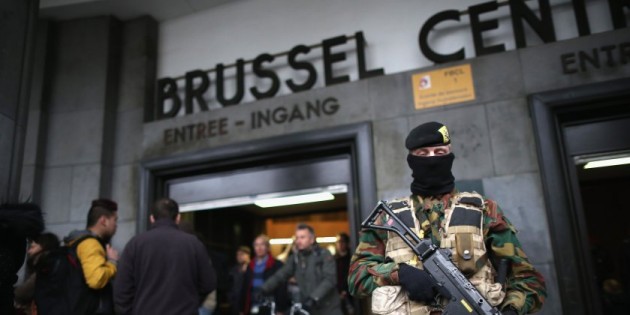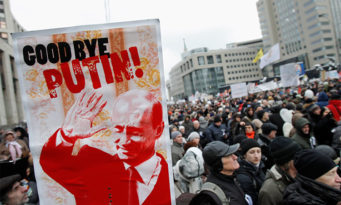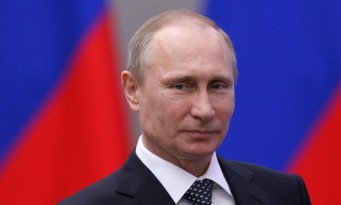Brussels attacks: Does Europe need new security structures?

- By defencematters
The attacks in Brussels on March 22nd were almost inevitable. They came as a stark reminder as to how difficult stopping such incidents is.
Andrej Matisak
The attacks in Brussels on March 22nd were almost inevitable. They came as a stark reminder as to how difficult stopping such incidents is. Inevitably lessons will be learned and security tightened. Following the attacks, Italy’s Prime Minister Matteo Renzi called for a European pact for "freedom and security". But is the solution to Europe's terrorism problem added security structures or a better use of existing structures? This is what the experts had to say:
John R. Deni*, Research Professor of National Security Studies, Strategic Studies Institute
I’m not convinced that the answer to the problem Europe is facing is ‘more structures.’ Structures — EU, Europol, or NATO, for example — exist. What is perhaps needed is a more effective and efficient use of these structures as well as more investment in the tools and mechanisms that are wielded through such structures.
Terrorism is a means to achieve political ends, and therefore it’s unlikely that we can ever end its use. Instead, Europe must focus on limiting its effects through resilience; through more aggressively sharing information about air travelers and returning foreign fighters (for example, through the delayed passenger name record initiative, and frankly, even that doesn’t go far enough on the issue of intra-EU flights); through more rigorous, standardized enforcement at the EU’s external borders; through the use of biometric information and databases; through offensive cyber operations aimed at ISIL; and through limited offensive kinetic operations against ISIL command and control in Syria, Iraq, and Libya.
A common thread here is funding — many of these things I’ve identified above require investment in new technology, new capabilities, new training efforts, and so forth. It’s particularly ironic that PM Renzi is calling for new structures, when Italy’s defense budget is woefully underfunded.
* These views do not necessarily reflect those of the U.S. Government.
Igor Merheim-Eyre, PhD Candidate in International Relations, School of Politics and International Relations, University of Kent
It seems that big ideas are now part of the political response to crises and tragedies in Europe and beyond; after tweets of ‘shock’ and statements of ‘solidarity’, come proposals for new security architectures to overwhelm or add to the existing ones. While, rhetorically, this may help to calm the anxiety of the public and mobilise experts, there are two problems with these grand proposals.
The first one is the simplest: Europe does not need more security architectures, but it needs to muster and strengthen those that are already in existence: We have NATO, but we continue to under-spend on our defence, and cannot decide on its operational limits; We have the OSCE but can’t agree on how it should be used organised; We have the CFSP & CSDP, but Member States are happy to keep its structures on a life support: to prevent its death but, at the same time, prevent it from gaining too much life.
In many ways (as my second point) this sort of treatment can be seen across EU but also Member States’ institutions and agencies. The problem does not lie with a need for a new architecture; there are already too many architectures in place. Instead, there is a need for lending them life, financial support and, above all, a clear strategic goal. For example, we talk constantly about the sharing of intelligence (as the Belgian Prime Minister Michel has been doing) but we need to gather and analyse such intelligence in the first place. We invest money into Schengen border management, but our satellites can hardly pick out football stadiums let alone migrant boats. We want to keep pressure on Russia, but we keep investing into new pipelines and further our dependency on its oil and gas supply.
In other words, we do not need new security architectures in Europe. We need to utilise those already operational and ensure that they fulfil the roles we have set them, otherwise (and there is already a dangerous trend pointing in that direction) we may possess multiple security architectures that are under-performing and essentially hollow. Simply building new security frameworks will not make us safer. But giving life and purpose to those already in place will significantly increase the probability of greater security.
Stanley Sloan, Nonresident Senior Fellow, Atlantic Council of the United States, Visiting Scholar in Political Science Middlebury College, Author of book Defense of the West: NATO, the European Union and the Transatlantic Bargain to be published in 2016
The attacks in Brussels and the ISIS threat of future attacks make it clear that current cooperation among European countries and in the transatlantic alliance is not sufficient. A new pact for “freedom and security” would be nice, but the real need is for practical measures. The biggest gap in cooperation is the failure of the European Union and NATO to manage a closer cooperative relationship. The terrorist threat should lead EU and NATO members to put aside the petty differences that have made such cooperation difficult and immediately establish a joint NATO-EU counter-terrorism working group.
More generally, while NATO has endorsed “comprehensive approaches” to security, the members have not given the organization the mandates to make this a reality. The members need to intensity cooperation on the wide variety of non-military approaches to security, including near-term needs in policing and border control all the way to information and other activities to counter the ISIS appeal to NATO and EU citizens.

















